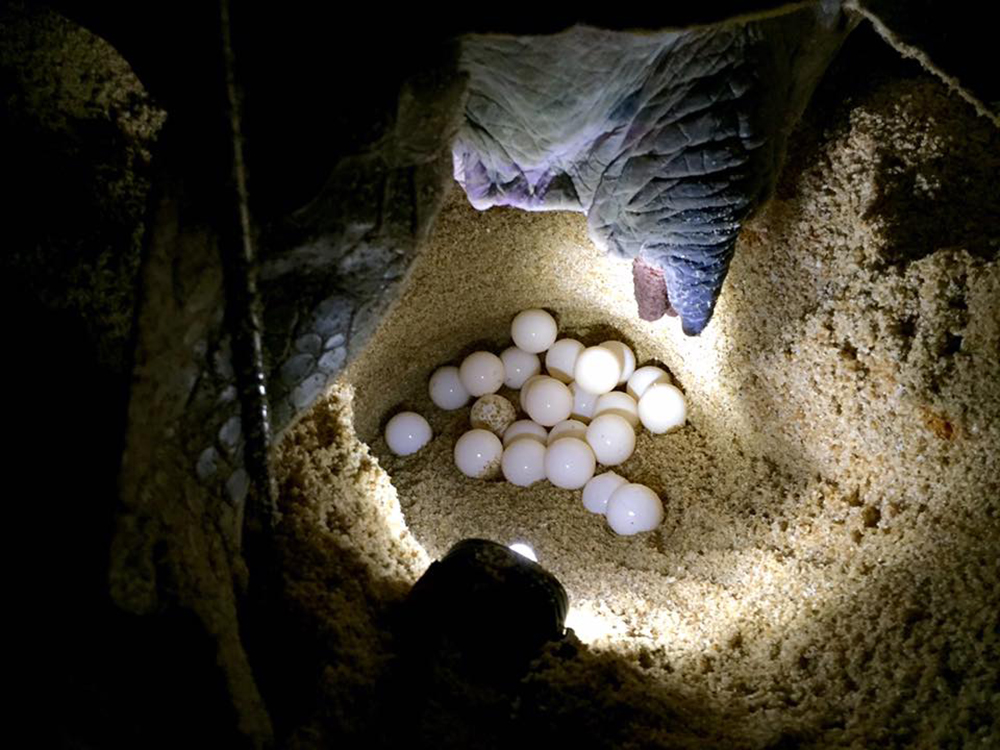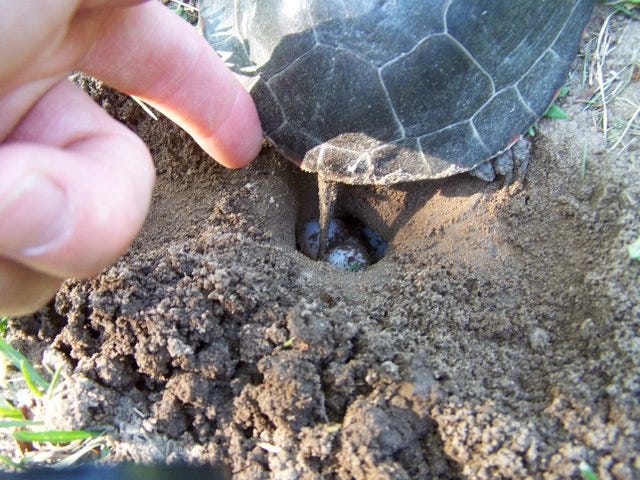Turtles leave their eggs to ensure safety and provide the best conditions for hatching. This behavior helps protect the eggs from predators and regulate temperature for successful incubation.
Turtles have evolved this instinctual behavior as a survival strategy for their offspring. Turtles are fascinating creatures known for their unique reproductive habits, including the way they lay and protect their eggs. Understanding why turtles leave their eggs can provide insight into their natural behaviors and the challenges they face in the wild.
We will explore the reasons behind this behavior and delve into the significance of egg laying for turtle populations. By gaining a deeper understanding of this aspect of turtle biology, we can appreciate the complex and remarkable adaptations that have allowed these ancient reptiles to thrive for millions of years.

Credit: www.turtleconservationsociety.org.my
Environmental Factors
Environmental factors play a crucial role in why turtles leave their eggs. Two key factors that influence this behavior are temperature and humidity.
Temperature
Turtles leave their eggs based on the surrounding temperature, which helps in regulating the development of the embryos.
Humidity
Optimal humidity levels are essential for the eggs to develop properly, influencing the nesting behavior of turtles.
Predator avoidance is another significant factor that drives turtles to leave their eggs in specific locations.
Genetic Programming
Genetic programming is the reason why turtles leave their eggs. This is a natural process that has been happening for millions of years. Turtles have a unique reproductive system that allows them to lay their eggs on land, away from the dangers of the sea. In this post, we will explore the instinctual behavior and the survival of offspring of turtles, which are key factors in their genetic programming.
Instinctual Behavior
Instinctual behavior is an innate response that is programmed into the genetic makeup of turtles. When it comes to laying their eggs, turtles instinctively know the ideal location to ensure the survival of their offspring. They look for a spot that is dry, warm, and safe from predators.
These instincts have been passed down from generation to generation, ensuring that turtles continue to thrive in the wild. When a female turtle reaches maturity, she will return to the same beach where she was born to lay her own eggs. This behavior is known as natal homing.
Survival Of Offspring
The survival of offspring is the main reason why turtles leave their eggs on land. Unlike fish, turtles cannot lay their eggs in the water. The eggs need to be laid on land, where they will be safe from predators and the elements. The sand provides a protective layer that shields the eggs from extreme temperatures and predators.
Once the eggs are laid, the female turtle covers them with sand and returns to the sea. The eggs will hatch after a few months, and the baby turtles will make their way to the sea, using the moonlight as a guide. This is a perilous journey, as many predators lie in wait for the baby turtles. Only a few of them will survive to adulthood.
Human Impact
Habitat Destruction
Turtles often leave their eggs due to human-induced habitat destruction. Construction projects, urbanization, and pollution can disrupt nesting sites, forcing turtles to seek alternative locations. This interference can lead to stress and abandonment of their eggs, impacting the survival of the next generation.
Poaching
Poaching poses a significant threat to turtle populations, leading to the abandonment of eggs. Illegal collection of turtle eggs for consumption or trade disrupts the natural reproduction process. This unlawful activity not only harms the current generation but also hinders the future sustainability of turtle populations.
Conservation Efforts
Turtles play a crucial role in maintaining the ecological balance, and their nesting habits are essential for the survival of their species. Conservation efforts aimed at protecting turtle eggs and nesting sites are vital in ensuring the sustainability of these remarkable creatures.
Protected Nesting Areas
Establishing and maintaining protected nesting areas is a key strategy in turtle conservation. These areas provide a safe and secure environment for turtles to lay their eggs without the threat of human interference or predation. By creating these designated zones, we can help ensure the survival of turtle populations for future generations.
Community Involvement
Engaging local communities in turtle conservation efforts is crucial. By educating and involving the community in the protection of nesting sites, we can raise awareness about the importance of preserving these areas. Community members can contribute by reporting turtle nesting activities, participating in beach clean-ups, and supporting initiatives aimed at safeguarding turtle habitats.
Research And Monitoring
Research and monitoring play a crucial role in understanding the behavior and migration patterns of turtles, especially in relation to their nesting habits. By tracking their movements and studying their nesting behavior, scientists can gain valuable insights into the reasons why turtles leave their eggs and the challenges they face during this process.
Tracking Migration Patterns
By tracking the migration patterns of turtles, researchers can gather data on their movements across different habitats and geographical regions. This information helps in identifying the specific locations where turtles lay their eggs and the factors that influence their choice of nesting sites. Through GPS tagging and satellite tracking, scientists can monitor the journeys of turtles and determine the impact of environmental changes on their migration routes.
Studying Nesting Behavior
Studying the nesting behavior of turtles involves observing their nesting habits, egg-laying processes, and the conditions of nesting sites. This research helps in understanding the challenges faced by turtles during the egg-laying process, such as predation, habitat destruction, and climate-related threats. By monitoring nesting sites and documenting the success rates of laid eggs, scientists can assess the effectiveness of conservation efforts and implement strategies to protect turtle populations.

Credit: conserveturtles.org
Challenges And Solutions
Turtles leaving their eggs face various challenges, and conservationists have developed innovative solutions to address these issues. Understanding the impact of climate change and implementing artificial incubation techniques are crucial for the survival of turtle populations.
Climate Change Effects
The warming of the planet has significant implications for turtle nesting sites. Rising temperatures can alter the sex ratios of turtle hatchlings, leading to imbalances in the population. Additionally, extreme weather events such as storms and flooding can destroy nesting areas, threatening the survival of turtle eggs.
Artificial Incubation Techniques
Conservationists have turned to artificial incubation as a solution to protect turtle eggs from natural predators and environmental hazards. By carefully monitoring temperature and humidity levels, artificial incubation can mimic the conditions of natural nests, increasing the chances of successful hatching. This method also allows for the relocation of eggs to safer locations, reducing the risk of predation and human disturbance.

Credit: www.facebook.com
Conclusion
In the end, it’s fascinating to understand why turtles leave their eggs. It’s a natural instinct crucial for the survival of their offspring. By finding suitable nesting sites, they increase the chances of their eggs hatching successfully. This behavior is a testament to the remarkable ways in which animals adapt to their environments.
Understanding this process helps us appreciate and protect these incredible creatures.





Leave a Reply